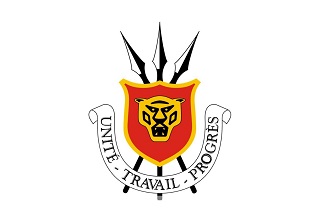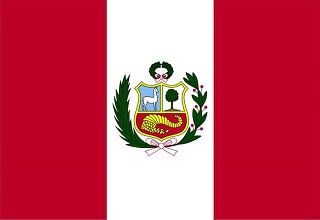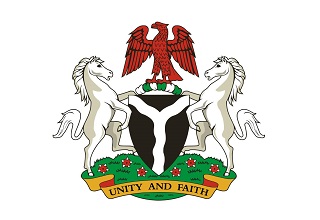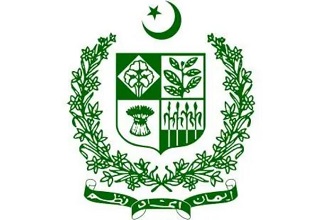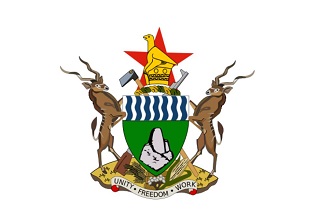Regarding the Inspection and Quarantine Requirements for Export of Fresh Melon from Uzbekistan to China
In accordance with the regulations of the Chinese Customs and the Ministry of Agriculture of Uzbekistan regarding phytosanitary requirements for the import of fresh melons from Uzbekistan into China, effective immediately, the import of fresh melons from Uzbekistan that meet the following requirements is permitted.
I. Inspection and Quarantine Basis
(1) "Biosafety Law of the People's Republic of China";
(2) "Law of the People's Republic of China on Import and Export Animal and Plant Quarantine" and its implementing regulations;
(3) "Food Safety Law of the People's Republic of China" and its implementing regulations;
(4) "Measures for the Supervision and Administration of Inspection and Quarantine of Imported Fruits";
(5) "Protocol between the Chinese Customs and the Ministry of Agriculture of Uzbekistan on Phytosanitary Requirements for the Import of Fresh Melons from Uzbekistan into China".
II. Permitted Import Commodity Names
Fresh melon, scientific name Cucumis melo L., English name Melon.
III. Permitted Origin
The entire territory of Uzbekistan.
IV. Approved Planting Bases and Packaging Plants
Melon planting bases and packaging plants exported to China must be reviewed by the Uzbek Ministry of Agriculture and registered with Chinese Customs. Registration information must include name, address, and registration number to ensure accurate traceability in the event that exported goods fail to comply with the relevant provisions of this announcement. Before the annual export season, the Uzbek Ministry of Agriculture must provide a list of registered plants to Chinese Customs, which will be published on the official website of Chinese Customs after review and approval.
V. List of Quarantine Pests of Concern to Chinese Customs
1. Myiopardalis pardalina
2. Cladosporium cucumerinum
3. Verticillium albo-atrum
4. Verticillium dahliae
VI. Pre-Export Management
(I) Planting Base Management
1. All melon cultivation bases exported to China must establish comprehensive quality management and traceability systems under the supervision of the Uzbek Ministry of Agriculture, implement Good Agricultural Practices (GAP), and maintain sanitary conditions at the cultivation bases, including ensuring that there are no sources of pollution that could affect melon production and promptly removing fallen or rotten fruit. Integrated pest management (IPM) must also be implemented, including regular pest monitoring and surveys, physical, chemical, or biological pest control, and agricultural practices.
2. The Uzbek Ministry of Agriculture should develop field management plans for quarantine pests of concern to Chinese Customs in accordance with the International Standard for Phytosanitary Measures No. 6 (ISPM 6) and conduct field monitoring throughout the year. If pests or their corresponding symptoms are detected during monitoring, integrated management measures, including chemical, physical, or biological control, should be implemented to control pest population density or maintain a low prevalence level.
3. Pest monitoring and control should be carried out under the guidance of professional technicians, who should receive training from the Uzbek Ministry of Agriculture or its authorized agencies.
4. Melon cultivation bases exporting to China should maintain pest monitoring and control records and provide them to Chinese Customs upon request. Control records should include the name, active ingredient, dosage, and timing of chemical applications during the growing season.
5. Regarding Myiopardalis pardalina, melons exported to China must come from pest-free areas. These areas are established by the Uzbek Ministry of Agriculture in accordance with International Standard for Phytosanitary Measures (ISPM 10) and must be approved by Chinese Customs. The Uzbek Ministry of Agriculture should establish a monitoring system that utilizes Myiopardalis pardalina sex pheromones, Myiopardalis pardalina protein baits, and other systematic control measures, including fruit cutting, from flowering to harvest (see the attached document for details). If Myiopardalis pardalina is detected in a relevant pest-free area, the Uzbek Ministry of Agriculture must immediately suspend its pest-free status, notify Chinese Customs within 48 hours, and activate the emergency response plan. Once the Uzbek Ministry of Agriculture has eradicated the epidemic and has been approved by Chinese Customs, the pest-free production areas may resume production.
6. For other pests, such as Cladosporium cucumerinum, Verticillium albo-atrum, and Verticillium dahliae, the Uzbek Ministry of Agriculture or its authorized personnel must conduct field surveys every seven days, starting at the melon seedling stage. If any of these pests or symptoms are detected, the cultivation bases must implement comprehensive management measures, such as chemical or biological control, to control the pest outbreak. At the same time, the Uzbek Ministry of Agriculture will suspend all registered melon cultivation bases in the production area from exporting to China during the current export season and notify Chinese Customs of the relevant situation.
(II) Packaging Plant Management
1. The processing, packaging, storage, and shipping of melons exported to China must be conducted under the quarantine supervision of the Uzbek Ministry of Agriculture or its authorized personnel.
2. Packaging plants for melons exported to China must be clean and sanitary, with hardened floors and adequate storage for raw materials and finished products.
3. Functional areas for storing, processing, handling, and storing melons exported to China must be relatively independent and rationally laid out, and isolated from living areas.
4. Registered packaging plants must establish a traceability system to ensure that melons exported to China can be traced back to their registered planting bases. This system must include recording information such as the processing and packaging date, registered name or registration number, quantity, export date, export quantity, destination country, and container number.
(III) Packaging Requirements
1. Packaging materials for melons exported to China must be clean, unused, and comply with relevant Chinese plant quarantine requirements. If wooden packaging is used, it must comply with the requirements of International Standard for Phytosanitary Measures (ISPM 15).
2. During the packaging process, melons exported to China must be manually sorted, graded, and cleaned to remove diseased, insect-infested, rotten, or deformed fruit, branches, leaves, roots, or other plant debris, as well as soil.
3. Packaged melons, if stored, must be immediately put into storage. All melons entering storage must meet the same plant quarantine requirements and be stored separately to prevent reinfection by pests.
4. Each package must be labeled in Chinese or English with the melon species, variety, country, origin, name or registration number of the growing base, and packing plant. Each box and pallet must be marked with "输往中华人民共和国" or "Exported to the People's Republic of China" in Chinese or English.
5. Containers containing melons for export to China must be inspected for sanitary conditions upon packing. Containers must be sealed, and the seals must remain intact upon arrival at the Chinese port of entry.
(IV) Pre-export Inspection and Quarantine.
1. The Uzbek Ministry of Agriculture will conduct random inspections of 2% of each consignment of melons for export to China. If suspected pests or other insects are found, the fruit may be dissected for inspection. If no plant quarantine issues have occurred within two years, the sampling rate will be reduced to 1%.
2. If quarantine pests, branches, leaves, or soil of concern to Chinese Customs are found, the consignment will not be exported to China, and melon exports from the relevant growing bases and packing plants will be suspended for the current export season, depending on the circumstances. Uzbekistan should investigate the cause and take corrective measures. At the same time, it should preserve records of the seizure and provide them to Chinese Customs upon request.
(V) Requirements for Plant Quarantine Certificates
1. If the melons pass quarantine inspection, the Ministry of Agriculture of Uzbekistan shall issue a plant quarantine certificate in accordance with International Standard for Phytosanitary Measures No. 12 (ISPM 12), indicating the name or registration number of the planting base and packaging plant, and indicating "This consignment complies with the requirements specified in the Protocol of Phytosanitary Requirements for Export of Fresh Melon from Uzbekistan to China, and is free from quarantine pests of concern to China." in the additional statement on the plant quarantine certificate.
2. Before trade officially commences, the Ministry of Agriculture of Uzbekistan shall provide a sample of the plant quarantine certificate to Chinese Customs for verification and record-keeping.
VII. Entry Inspection and Quarantine and Handling of Unqualified Products
Upon arrival of melons imported into China at the Chinese port of entry, Chinese Customs shall conduct inspection and quarantine in accordance with the following requirements.
(I) Verification of Relevant Certificates and Labels
1. Verify whether the imported melons have obtained the "Entry Animal and Plant Quarantine Permit."
2. Verify whether the plant quarantine certificate complies with the provisions of Article 6, Item (5) of this Announcement.
3. Verify that the markings on the packaging boxes and pallets comply with the provisions of Article 6, Paragraph 3 of this Announcement.
(II) Entry Inspection and Quarantine.
1. Melons imported into China must enter through ports approved by Chinese Customs for fruit import.
2. Imported melons will be subject to inspection and quarantine in accordance with relevant laws, administrative regulations, and rules. Those that pass inspection and quarantine will be permitted entry.
(III) Disqualification Processing.
1. If the shipment is found to originate from a planting base or packaging plant not approved by Chinese Customs, the shipment will not be permitted entry.
2. If quarantine pests of concern to Chinese Customs or newly emerged quarantine pests in Uzbekistan are found, the shipment will be returned, destroyed, or quarantined.
3. If the shipment is found to be non-compliant with Chinese food safety laws, regulations, and national standards, the shipment will be returned or destroyed.
GACC
September 23, 2025
Myiopardalis pardalina Prevention and Control Measures
I. Attractant Trapping and Monitoring
The Uzbek Ministry of Agriculture shall monitor Myiopardalis pardalina using pheromones and protein baits in melon-producing areas exporting to China. Monitoring shall take place from April 20 (the beginning of the melon flowering season) to September 30 (the end of the melon harvest season).
(I) Types of Attractants and Traps
1. Pheromones and Traps.
The attractant is a male sex pheromone, and the lure core is made from male sex pheromone (ensure that the Myiopardalis pardalina lure core is sourced from a reputable supplier). Traps should be dome traps or other trapping devices approved for use in China. One lure core should be placed in each trap.
2. Protein Bait and Traps.
The attractants are Torula yeast and borax. Pellets are cylindrical. The trap uses a McPhail-type or other bait device approved for use in China. When using, pre-fill the trap with a small amount of clean water, then drop four bait pellets into the trap until dissolved.
(II) Monitoring Location:
Melon planting bases, packaging plants, melon distribution centers, cold storage facilities, etc.
(III) Hanging Method:
Hang the trap approximately 15-30 cm above the plants, providing shade and avoiding direct sunlight or rain.
(IV) Setting Density:
Use 1 hectare as a monitoring unit and place at least two traps for each bait. For each additional hectare of melon field, place two additional traps for each bait. At all other monitoring locations, place at least two traps for each bait.
(V) Bait Replacement:
Replace the bait every 15-20 days for pheromones and every 1-2 weeks for protein baits.
(VI) Inspection Cycle.
Pheromone should be applied 5-6 days before melon seedlings germinate and 5-6 days before flowering. Fruit fly counts should be conducted every 3 days starting from the date of application. If fruit flies are first detected at 8:00 a.m. on the day of the count, the data should be recorded immediately and subsequent counts should be terminated.
(VII) Inspectors.
The Ministry of Agriculture of Uzbekistan or authorized technicians.
II. Yellow Boards (Yellow Gel Traps)
All registered planting sites should display yellow boards. To enhance the trapping effect, phosphamidon (or other Chinese-approved agents) should be used in conjunction.
Trapping monitoring should continue from the fruiting period (growing period) of the melon until the end of the harvest period.
Each planting site should display at least 3 yellow boards per hectare. When the plantation area is larger than 1 hectare, 3 more yellow boards should be displayed for each additional hectare. Increase the density requirement of hanging three yellow boards.
During the growing season, yellow boards should be inspected every seven days; before harvest, they should be inspected twice every seven days.
Yellow boards and carbamide liquid should be replaced at least every two weeks. If the yellow boards are covered with plant debris, they should be replaced promptly. Carbamide attractants should be replaced according to the manufacturer's instructions to ensure their effectiveness throughout the growing season.
If the average number of fruit flies caught per yellow board at a registered planting site exceeds two for two consecutive weeks, the Uzbek Ministry of Agriculture will suspend the relevant planting site's export qualification for the current season and notify Chinese Customs.
III. Melon Opening Inspection
During the growing season for melons exported to China, every 40 hectares of melon planting sites will be inspected, and 200 melons with deformities, rot, insect damage, or other defects will be selected and opened for inspection to determine if there is fruit fly infestation.
